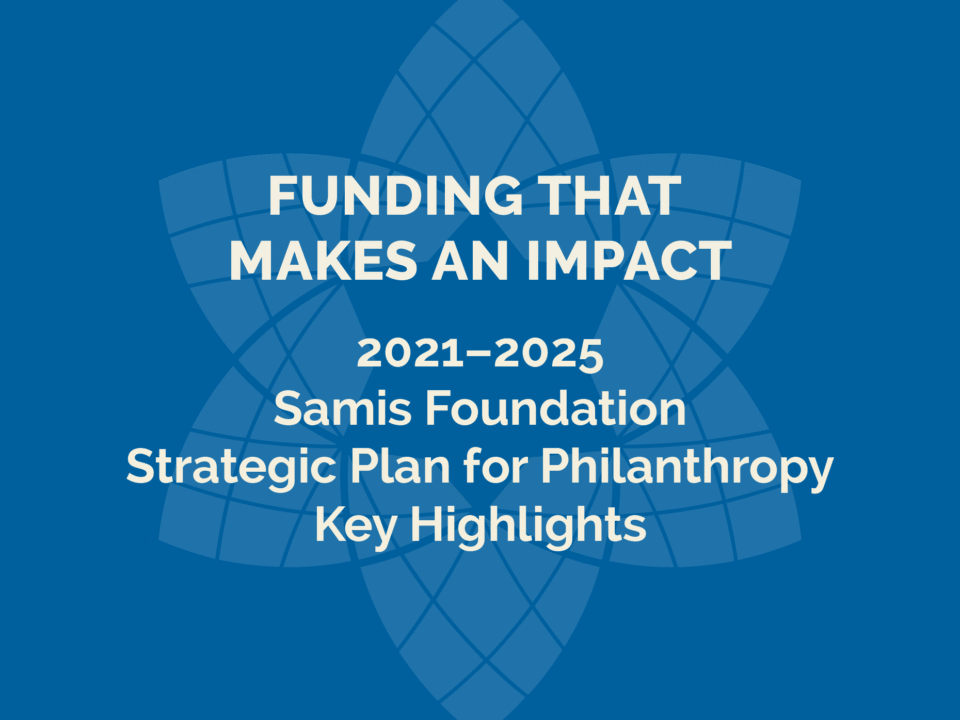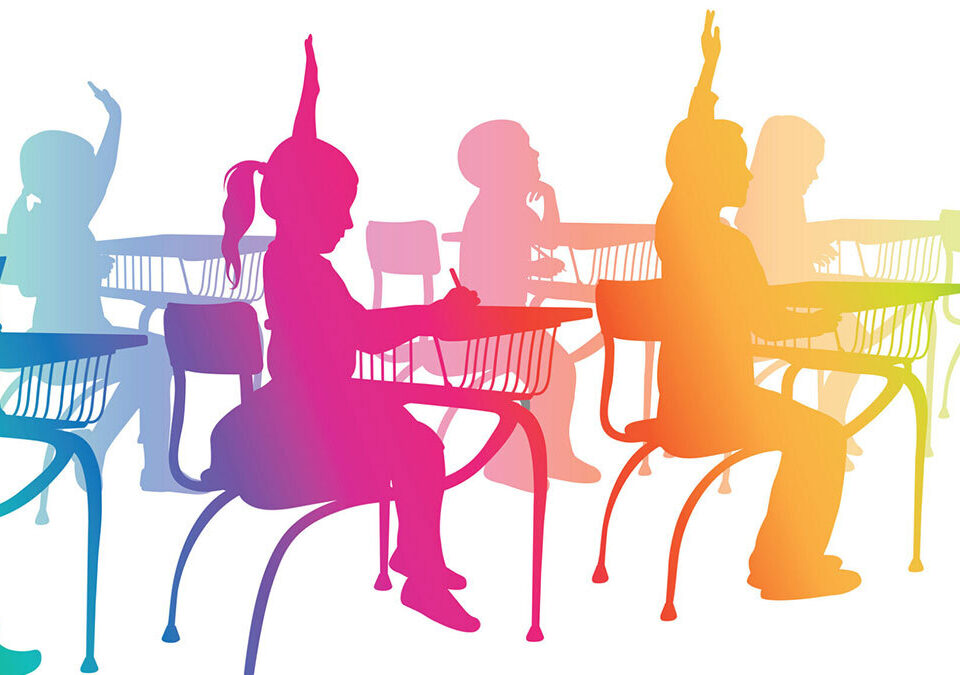
Congress Opened the Door to More Scholarships for Jewish Day Schools. Will Washington Walk Through It?
September 19, 2025By Ariel Lapson | October 2025
It’s no secret that North American Jewish supplemental schools are struggling. According to a 2023 Census Report by the Jewish Education Project, enrollment dropped by 45% from 2006 to 2020, and 761 schools closed altogether in that period. Yet despite these declines, the report also confirmed that supplemental schools, often referred to as Hebrew or synagogue Sunday schools, remain the main setting where most non-Orthodox Jewish children receive formal Jewish education.
A 2020 review of Jewish educational offerings in Washington State by the Samis Foundation found that most Jewish youth engaged in formal Jewish education were doing so through local Hebrew schools. This insight shaped the Foundation’s next step: a three-year, $1 million Youth Enrichment and Engagement Grant Initiative designed to expand access to intensive, immersive Jewish education. Of the 21 programs funded, seven synagogue-based schools received seed grants of up to $60,000 over three years, with a charge to reimagine what supplementary education could look like if experiential learning became the center of the model.
“We knew that synagogue schools were under-resourced despite reaching a majority of the Jewish kids in our state during the school year,” explained Connie Kanter, CEO of the Samis Foundation. “We wondered if support for innovation would lead to new immersive Jewish learning experiences that could boost post–B’nai mitzvah retention, deepen family engagement, and create synergies across Jewish organizations.”
The initiative produced a set of bold experiments—each different in design, but all pointing to what becomes possible when synagogues have the space to innovate.
In 2021, Congregation Beth Israel in Bellingham and Temple Beth Or in Everett—two small Reform congregations about an hour apart—joined forces to create Massa: A Teen Journey Toward Israel and Jewish Self-Discovery. Aimed at students ages 14 to 18, Massa offered monthly experiential learning rooted in Israeli history and Jewish identity. It was the first time in over five years that either school had integrated Israel-focused programming for teens, and the grant helped both congregations develop a new model that extended into younger grades as well. The program was designed to culminate in an Israel trip, but when travel became difficult after October 7, organizers pivoted quickly to a Sephardic heritage journey in Spain and Portugal. Parents and community members stepped in to support fundraising, organizing bake sales and silent auctions to help make the trip possible. “Each year of Massa, the students’ responses deepened,” said Victoria Mayers, Education Director at Congregation Beth Israel. “They came back from Spain and Portugal with a real understanding of Jewish history, and a stronger desire to visit Israel. She added, “After October 7th, it really hit them that they had walked through entire Jewish neighborhoods in Europe that no longer existed. Through that experience they realized the importance of Jewish peoplehood.”
Over the three years, enrollment grew from 24 to 37 students. Seventeen teens traveled to Spain and Portugal, and seven went on to become madrichim (teen teaching assistants) in the Hebrew school. The program also brought Israel studies back into the curriculum for the first time in five years and inspired a new middle school program modeled on Massa. Parents became more involved as well—five took on new leadership roles in the synagogue, and 14 families organized fundraising efforts. The model showed how small communities can build scale and energy together, but it also revealed challenges: when the capstone trip shifted away from Israel, momentum for collaboration between the two synagogues faded in the third year. Nonetheless, Massa shows how travel tied to Jewish learning can strengthen both students’ and parents’ engagement.
At Temple Beth Hatfiloh, a Reconstructionist congregation in Olympia, innovation looked different. When the pandemic disrupted traditional Sunday school attendance, the synagogue launched Darchei Noam, a Shabbat-based program built around monthly family gatherings called “Growing Shabbat.” Hosted at nearby Camp Solomon Schechter, the full-day experiences combined meals, tefilah, music, and age-appropriate learning. “The idea of turning every fourth week into a community Shabbat experience at Camp Solomon Schechter was just a pipe dream until we received the Samis grant,” said Catherine Carmel, Director of Family Life and Learning at Temple Beth Hatfiloh. “Being able to bring people together outside the holidays, and do it consistently, has been incredibly powerful and transformative for our community.”
The results have been measurable: Congregational membership grew by 25 percent, from 200 to more than 250 families. Pre-b’nai mitzvah families became anchors of the monthly gatherings, while a new pre-K storytime featuring community elders expanded the program to the youngest children. A cohort of teen leaders also emerged organically from the b’nai mitzvah group, and parents began to organize programming and meals. To sustain the program, the community raised $10,000 in grassroots fundraising. Darchei Noam demonstrated that experiential Jewish learning doesn’t need to happen weekly to be meaningful. Immersive Shabbat gatherings provided deep value, strengthened intergenerational connections, and highlighted the role of local camps as powerful settings for communal Jewish experiences.
Temple De Hirsch Sinai (TDHS), the largest Reform congregation in Washington State, took yet another approach. Their seventh and eighth grade program was transformed through Tiyulim, a series of monthly Sunday field trips framed around core Jewish values. Students visited places like KEXP radio, the Seattle Aquarium, and Jewish Family Service, discovering how Jewish ideas connected to the wider world. The program deliberately hired a college sophomore to serve as a para-educator, providing young leadership that made the experience more relatable and appealing to teens. While students were out exploring, parents stayed onsite at the synagogue, connecting over coffee, conversation, and mahjong. At the end of the year, students presented reflections on how the trips shaped their Jewish identity. “A big takeaway for the kids who participated in Tiyulim was that they didn’t realize how Judaism is present in every aspect of their lives,” said Stacey Delcau, TDHS Director of Education. “They know how to be Jewish at home and in the synagogue, but these field trips taught them they can experience the world around them through a Jewish lens.”
The program quickly showed results. Seventh grade retention rates improved, with most students continuing to engage past their bar or bat mitzvah. The high school madrichim program grew by 35 percent, from 50 to 72 students, as Tiyulim alumni moved into leadership roles. Enrollment in the ninth and tenth grade L’taken trip to Washington, D.C. doubled, from 10 to 20 students. And 14 members of the 2025 10th grade confirmation class were alumni of Tiyulim. Parents also formed informal communities during the Sunday gatherings, creating new opportunities for family engagement. The program demonstrated the importance of consistency. Regular meetings helped students build habits and sustain engagement, while parent involvement and the presence of a relatable college-aged educator further boosted participation. One important learning was that when the program scheduling became irregular or less frequent, even for good reason, momentum faltered. Cancelled classes led to long gaps between meetings, and synagogue renovations disrupted the meetings of the parent community. The lesson was clear: consistency matters as much as creativity.
Across all three of these synagogue-based, experiential education programs, a clear pattern emerged. The Samis grant created space for educators to take risks and reimagine what Hebrew school could be. And once those programs took root, communities stepped in to sustain them—through new donors, grassroots fundraising, or reallocated budgets. Seed money started the process, but community commitment kept it going.
For funders and Jewish leaders, these case studies highlight why synagogue-based education still matters. Supplementary schools remain one of the few consistent settings where children and families encounter Jewish life, not just during the school years but across a lifetime of milestones. When paired with immersive experiences like camp, youth programs, or teen travel, synagogue schools can be important anchors of Jewish connection.
Direct investments in Hebrew schools are rare, yet these replicable models show that innovation in this sector is both possible and impactful. By supporting experimentation in often-overlooked settings, funders can help synagogues reach more youth and strengthen the future of Jewish education.
Ariel Lapson is the Senior Program Officer for Experiential Education and Director of Grants Management at the Samis Foundation.




